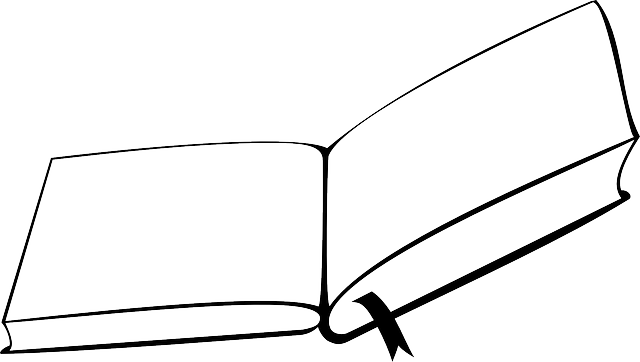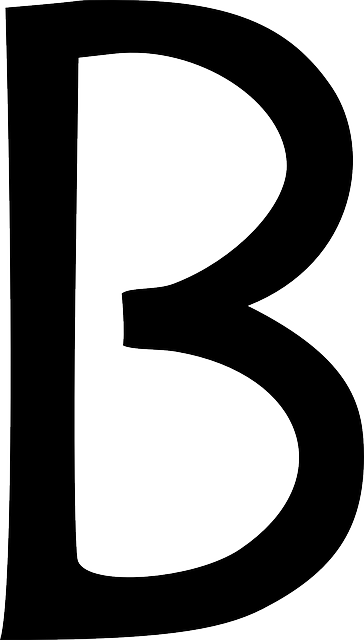الجيل الرابع (اتصالات لاسلكية)
في الاتصالات 4 جي 4G، تشير إلى الجيل الرابع من اللاسلكية الخلوية وهوخليفة لمعايير 3G و2G. بقية هذا الموضوع تنسب 4G إلى الاتصالات المتقدمة المتنقلة الدولية (IMT Advanced)، على الرغم من 4G هومصطلح أوسع ويمكنه حتى يضم معايير خارج الاتصالات المتقدمة المتنقلة الدولية. يمكن لنظام 4G ترقية شبكات الاتصالات الحالية، ويُتَوقَّع حتى يوفر حلا شاملا وآمنا على بروتوكول الانترنت حيث تقدم المرافق مثل الصوت والبيانات والوسائط المتعددة المتدفقة إلى المستخدمين على قاعدة "أي زمان ومكان"، وبمعدلات بيانات أعلى بكثير مقارنةبالأجيال السابقة.
خلفية
The nomenclature of the generations generally refers to a change in the fundamental nature of the service, non-backwards compatible transmission technology, and new frequency bands. New generations have appeared about every ten years since the first move from 1981 analog (1G) to digital (2G) transmission in 1992. This was followed, in 2001, by 3G multi-media support, spread spectrum transmission and at least 200 kbit/s, in 2011 expected to be followed by 4G, which refers to all-IP packet-switched networks, mobile ultra-broadband (gigabit speed) access and multi-carrier transmission.[]
The fastest 3G based standard in the WCDMA family is the HSPA+ standard, which was commercially available in 2009 and offers 28 Mbit/s downstreams without MIMO, i.e. only with one antenna (it would offer 56 Mbit/s with 2x2 MIMO), and 22 Mbit/s upstreams. The fastest 3G based standard in the CDMA2000 family is the EV-DO Rev. B, which was available in 2010 and offers 15.67 Mbit/s downstreams.[]
In mid 1990s, the ITU-R organization specified the IMT-2000 specifications for what standards that should be considered 3G systems. However, the cell phone market only brands some of the IMT-2000 standards as 3G (e.g. WCDMA and CDMA2000), but not all (3GPP EDGE, DECT and mobile-WiMAX all fulfil the IMT-2000 requirements and are formally accepted as 3G standards, but are typically not branded as 3G). In 2008, ITU-R specified the IMT-Advanced (International Mobile Telecommunications Advanced) requirements for 4G systems.
متطلبات الاتحاد الدولي للاتصالات ومعايير أربعة جي
This article uses 4G to refer to IMT-Advanced (International Mobile Telecommunications Advanced), as defined by ITU-R. An IMT-Advanced cellular system must fulfil the following requirements:
- Based on an all-IP packet switched network.
- Peak data rates of up to approximately 100 Mbit/s for high mobility such as mobile access and up to approximately 1 Gbit/s for low mobility such as nomadic/local wireless access, according to the ITU requirements.
- Dynamically share and utilize the network resources to support more simultaneous users per cell.
- Scalable channel bandwidth, betweenخمسة and 20 MHz, optionally up to 40 MHz.
- Peak link spectral efficiency of 15 bit/s/Hz in the downlink, and 6.75 bit/s/Hz in the uplink (meaning that 1 Gbit/s in the downlink should be possible over less than 67 MHz bandwidth).
- System spectral efficiency of up to ثلاثة bit/s/Hz/cell in the downlink and 2.25 bit/s/Hz/cell for indoor usage.
- Smooth handovers across heterogeneous networks.
- Ability to offer high quality of service for next generation multimedia support.
في سبتمبر 2009, the technology proposals were submitted to the International Telecommunication Union (ITU) as 4G candidates. Basically all proposals are based on two technologies:
- LTE Advanced standardized by the 3GPP
- 802.16m standardized by the IEEE (i.e. WiMAX)
Present implementations of WiMAX and LTE are largely considered a stopgap solution that will offer a considerable boost while WiMAX 2 (based on the 802.16m spec) and LTE Advanced are finalized. Both technologies aim to reach the objectives traced by the ITU, but are still far from being implemented.
The first set of 3GPP requirements on LTE Advanced was approved in June 2008. LTE Advanced will be standardized in 2010 as part of the Releaseعشرة of the 3GPP specification. LTE Advanced will be fully built on the existing LTE specification Releaseعشرة and not be defined as a new specification series. A summary of the technologies that have been studied as the basis for LTE Advanced is included in a technical report.
Current LTE and WiMAX implementations are considered pre-4G, as they don't fully comply with the planned requirements of 1 Gbit/s for stationary reception and 100 Mbit/s for mobile.
Confusion has been caused by some mobile carriers who have launched products advertised as 4G but which are actually current technologies, commonly referred to as '3.9G', which do not follow the ITU-R defined principles for 4G standards. A common argument for branding 3.9G systems as new-generation is that they use different frequency bands to 3G technologies; that they are based on a new radio-interface paradigm; and that the standards are not backwards compatible with 3G, whilst some of the standards are expected to be forwards compatible with "real" 4G technologies.
While the ITU has adopted recommendations for technologies that would be used for future global communications, they do not actually perform the standardization or development work themselves, instead relying on the work of other standards bodies such as IEEE, The WiMAX Forum and 3GPP. Recently, ITU-R Working Party 5D approved two industry-developed technologies (LTE Advanced and WirelessMAN-Advanced) for inclusion in the ITU’s International Mobile Telecommunications Advanced (IMT-Advanced program), which is focused on global communication systems that would be available several years from now.[] This working party’s objective was not to comment on today’s 4G being rolled out in the United States and in fact, the Working Party itself purposely agreed not to tie their IMT-Advanced work to the term 4G, recognizing its common use in industry already; however, the ITU’s PR department ignored that agreement and used term 4G anyway when issuing their press release.[]
The ITU’s purpose is to foster the global use of communications.[] The ITU is relied upon by developing countries,[] for example, who want to be assured a technology is standardised and likely to be widely deployed. While the ITU has adopted recommendations for technologies that would be used for future global communications, they do not actually do the standardization or development work themselves, instead relying on the work of other standards bodies such as IEEE, The WiMAX Forum and 3GPP. While the ITU has developed recommendations on IMT-Advanced, those recommendations are not binding on ITU member countries.[]
ما قبل أربعة جي والأنظمة المرشحة
The wireless telecommunications industry as a whole has early assumed the term 4G as a short hand way to describe those advanced cellular technologies that, among other things, are based on or employ wide channel OFDMA and SC-FDE technologies, MIMO transmission and an all-IP based architecture.[] Mobile-WiMAX, first release LTE, IEEE 802.20 as well as Flash-OFDM meets these early assumptions, and have been considered as 4G candidate systems, but do not yet meet the more recent ITU-R IMT-Advanced requirements.
أنظمة أربعة جي المرشحة
LTE Advanced
- انظر أيضا: 3GPP Long Term Evolution (LTE) أدناه
LTE Advanced (Long-term-evolution Advanced) is a candidate for IMT-Advanced standard, formally submitted by the 3GPP organization to ITU-T in the fall 2009, and expected to be released in 2012. The target of 3GPP LTE Advanced is to reach and surpass the ITU requirements. LTE Advanced is essentially an enhancement to LTE. It is not a new technology but rather an improvement on the existing LTE network. This upgrade path makes it more cost effective for vendors to offer LTE and then upgrade to LTE Advanced which is similar to the upgrade from WCDMA to HSPA. LTE and LTE Advanced will also make use of additional spectrum and multiplexing to allow it to achieve higher data speeds. Coordinated Multi-point Transmission will also allow more system capacity to help handle the enhanced data speeds. Releaseعشرة of LTE is expected to achieve the LTE Advanced speeds. Releaseثمانية currently supports up to 300 Mbit/s download speeds which is still short of the IMT-Advanced standards.
| LTE Advanced | |
|---|---|
| Peak Download | 1 Gbit/s |
| Peak Upload | 500 Mbit/s |
IEEE 802.16m or WirelessMAN-Advanced
The IEEE 802.16m or WirelessMAN-Advanced evolution of 802.16e is under development, with the objective to fulfill the IMT-Advanced criteria of 1 Gbit/s for stationary reception and 100 Mbit/s for mobile reception.
4G predecessors and discontinued candidate systems
3GPP Long Term Evolution (LTE)
- See also: LTE Advanced above
The pre-4G technology 3GPP Long Term Evolution (LTE) is often branded "4G", but the first LTE release does not fully comply with the IMT-Advanced requirements. LTE has a theoretical net bit rate capacity of up to 100 Mbit/s in the downlink and 50 Mbit/s in the uplink if a 20 MHz channel is used — and more if multiple-input multiple-output (MIMO), i.e. antenna arrays, are used.
The physical radio interface was at an early stage named High Speed OFDM Packet Access (HSOPA), now named Evolved UMTS Terrestrial Radio Access (E-UTRA). The first LTE USB dongles do not support any other radio interface.
The world's first publicly available LTE service was opened in the two Scandinavian capitals Stockholm (Ericsson system) and Oslo (a Huawei system) on 14 December 2009, and branded 4G. The user terminals were manufactured by Samsung. Currently, the two publicly available LTE services in the United States are provided by Metro PCS, and Verizon Wireless.AT&T also has an LTE service in planned for deployment between mid-2011 and end of 2013.
Mobile WiMAX (IEEE 802.16e)
The Mobile WiMAX (IEEE 802.16e-2005) mobile wireless broadband access (MWBA) standard (also known as WiBro in South Korea) is sometimes branded 4G, and offers peak data rates of 128 Mbit/s downlink and 56 Mbit/s uplink over 20 MHz wide channels[].
The world's first commercial mobile WiMAX service was opened by KT in Seoul, South Korea on 30 June 2006.
Sprint Nextel has begun using Mobile WiMAX, as of September 29, 2008 branded as a "4G" network even though the current version does not fulfil the IMT Advanced requirements on 4G systems.
In Russia, Belarus and Nicaragua WiMax broadband internet access is offered by a Russian company Scartel, and is also branded 4G, Yota.
UMB (formerly EV-DO Rev. C)
UMB (Ultra Mobile Broadband) was the brand name for a discontinued 4G project within the 3GPP2 standardization group to improve the CDMA2000 mobile phone standard for next generation applications and requirements. In November 2008, Qualcomm, UMB's lead sponsor, announced it was ending development of the technology, favouring LTE instead. The objective was to achieve data speeds over 275 Mbit/s downstream and over 75 Mbit/s upstream.
Flash-OFDM
At an early stage the Flash-OFDM system was expected to be further developed into a 4G standard.
iBurst and MBWA (IEEE 802.20) systems
The iBurst system ( or HC-SDMA, High Capacity Spatial Division Multiple Access) was at an early stage considered as a 4G predecessor. It was later further developed into the Mobile Broadband Wireless Access (MBWA) system, also known as IEEE 802.20.
مقارنة معدل البيانات
يوضح الجددول التالي مقارنة بين أنظمة أربعة جي المرشحة في لقاء التكنولوجيات المنافسة.
| المعيار | العائلة | الاستخدام الرئيسي | تكنولوجيا الراديو | تنزيل (Mbit/s) | حمل (Mbit/s) | هامش |
|---|---|---|---|---|---|---|
| LTE | UMTS/4GSM | Mobile Internet | OFDMA/MIMO/SC-FDMA | 326.4 | 86.4 | LTE-Advanced update to offer over 1 Gbit/s speeds. |
| 802.16e | WiMAX | Mobile Internet | MIMO-SOFDMA | 70 | 70 | Quoted speeds only achievable at very short ranges, more practicallyعشرة Mbit/s atعشرة km. |
| Flash-OFDM | Flash-OFDM | Mobile Internet mobility up to 200mph (350km/h) |
Flash-OFDM | 5.3 10.6 15.9 |
1.8 3.6 5.4 |
Mobile range 18miles (30km) extended range 34 miles (55km) |
| HIPERMAN | HIPERMAN | Mobile Internet | OFDM | 56.9 | 56.9 | |
| WiBro | WiBro | Mobile Internet | OFDMA | 50 | 50 | Mobile range (900 m) |
| iBurst | iBurst 802.20 | Mobile Internet | HC-SDMA/TDD/MIMO | 64 | 64 | 3–12 km |
| EDGE Evolution | GSM | Mobile Internet | TDMA/FDD | 1.9 | 0.9 | 3GPP Release 7 |
|
UMTS W-CDMA HSDPA+HSUPA HSPA+ |
UMTS/3GSM | Mobile Internet |
CDMA/FDD CDMA/FDD/MIMO |
0.384 14.4 42 |
0.384 5.76 11.5 |
HSDPA widely deployed. Typical downlink rates today 2 Mbit/s, ~200 kbit/s uplink; HSPA+ downlink up to 42 Mbit/s. |
| UMTS-TDD | UMTS/3GSM | Mobile Internet | CDMA/TDD | 16 | 16 | Reported speeds according to IPWireless using 16QAM modulation similar to HSDPA+HSUPA |
| 1xRTT | CDMA2000 | Mobile phone | CDMA | 0.144 | 0.144 | Succeeded by EV-DO |
|
EV-DO 1x Rev. 0 EV-DO 1x Rev.A EV-DO Rev.B |
CDMA2000 | Mobile Internet | CDMA/FDD | 2.45 3.1 4.9xN |
0.15 1.8 1.8xN |
Rev B note: N is the number of 1.25 MHz chunks of spectrum used. Not yet deployed. |
ملاحظات: جميع السرعات المذكورة هي القيمة القصوى النظرية وستختلف حسب عدة عوامل، منها استخدام الإرساليات الخارجية، والمسافة من البرج والسرعة الأرضية (مثلاً الاتصالات على متن قطار قد تكون أسوأ من تلك الحادثة من مكان ثابت). Usually the bandwidth is shared between several terminals. The performance of each technology is determined by a number of constraints, including the spectral efficiency of the technology, the cell sizes used, and the amount of spectrum available. For more information, see Comparison of wireless data standards.
الهدف والنهج
الأهداف
يتم تطوير 4G حاليا للتوافق مع جودة الخدمة والمعدلات التي تحددها التطبيقات القادمة مثل الدخول اللاسلكي على النطاق العريض، وخدمة رسائل الوسائط المتعددة (ملتيميديا)، ودردشة الصوت والصورة ، والتلفزيون المتنقل، ومحتوى التلفزيون عالي الدقة، بث الصوت والصورة الرقمي (DVB)، والخدمات الأصصغر مثل الصوت والبيانات، والخدمات الأخرى التي تستخدم عرض النطاق الترددي.
وقد حددت مجموعة عمل 4G ما يأتي كأهداف لمعيار 4G للاتصالات اللاسلكية:
- نظام كفء طيفيا (بت/ث/هرتز وبت/ث/هرتز/المسقط) ،
- قدرة عالية للشبكة: مزيد من المستخدمين في وقت واحد لكل خلية،
- معدل بيانات اسمي 100 ميغابت/ثانية فيبينما يتحرك العميل فيزيائيا بسرعات عالية بالنسبة للمحطة، و1 جيجابت/ثانية، بينماقد يكون العميل والمحطة في مواقع ثابتة نسبيا كما يحدد الاتحاد الدولي للاتصالات الراديوية،
- معدل بيانات يقدر على الأقل ب100 ميغابت/ثانية بين أي نقطتين في العالم،
- تحويلا سلسا عبر الشبكات غير المتجانسة،
- ربط غير منبتر وتجوال عالمي عبر الشبكات المتعددة،
- جودة عالية للخدمة لجيل الوسائط المتعددة المقبلة (صوت في الوقت الحقيقي، وبيانات بسرعة عالية، ومحتوى فيديوعالي الدقة، والتلفزيون المحمول، الخ)
- التوافقية مع المعايير الاسلكية الحالية،
- شبكة آي بي شاملة مبدلة للحزم.
باختصار، ينبغي لنظام 4G حتى يقوم حيويا بتبادل واستخدام موارد الشبكة لتلبية الحد الأدنى من متطلبات جميع المستخدمين الممكنين من 4G.
المناهج
كما هومشروح لدى اتحادات 4G بما في ذلك WINNER ، وWINNE—نحووصول لاسلكية في جميع مكان ، وWWRF، فأحد النهوج الرئيسية القائمة على التكنولوجيا يمكن تلخيصه على النحوالتالي، حيث مبادرة اللاسلكية العالمية والراديوالجديد (WINNER) هواتحاد لتعزيز أنظمة الاتصالات المتنقلة.
نقاط الاعتبار
- التغطية، والبيئة الإذاعية، والطيف ، والخدمات، ونماذج الأعمال، وأنواع النشر، والمستخدمين.
التكنولوجيات الرئيسية
- تقنيات الحزمة الرئيسية
- الموجات الكهرومغناطيسية: لاستغلال خاصية انتقائية قناة التردد
- MIMO "Multiple Input - Multiple Output" (عدة مدخلات وعدة مخرجات): لتحقيق فاعلية طيفية عالية
- مبدأ توربو: لتقليل الضوضاء/إشارة المطلوبة في جانب الاستقبال
- قابلة الاذاعة التكيفية
- التضمين، المعالجة المكانية مع تعدد الهوائيات وتعدد المستخدمين MIMO
- التتابع، بما في ذلك شبكات التتابع الثابتة (FRNs)، ومفهوم التتابع التعاوني، والمعروف باسم بروتوكول الأوضاع المتعددة
مميزات ال4G
وفقا لأعضاء فريق عمل 4G، فإن البنية التحتية ومحطات ال4G ستكون لديها جميع المعايير تقريبا من 2G الى 4G مُطبَّقة. وعلى الرغم من حتى النظم القديمة موجودة لاعتماد المستخدمين الحاليين، إلا حتى البنية التحتية لل4G ستكون على أساس الحزمة فقط (آي بي). وتقترح بعض العروض وجود منصة إنترنت مفتوحة. ومن التكنولوجيات الأولى التي تعد من الجيل الرابع ما يلي: Flash OFDM ، والنسخة المحمولة من 802.16e واي ماكس (المعروفm أيضا باسم وايبروفي كوريا الجنوبية) ، وHC-SDMA (انظر iBurst).قد يصل تطور 3GPP على المدى الطويل إلى السوق بعد 1-2 سنة من صدور الواي ماكس المحمولة.
كما يوجد إصدار أعلى سرعة من واي ماكس هومواصفة IEEE 802.16m. حيث سيكون التطور المتقدم طويل الأمد التطور اللاحق لمعيار 3GPP من التطور طويل الأمد.
المكونات
مخططات الوصول
كما تطورت المعايير اللاسلكية، فإن تقنيات الوصول المستخدمة ايضا أظهرت زيادة في الكفاءة والقدرة والاستيعاب. حيث استخدم الجيل الأول من المعايير اللاسلكية TDMA وFDMA. ففي القنوات اللاسلكية، أثبت TDMA كفاءة أقل في معالجة قنوات معدلات البيانات المرتفعة لأنه يحتاج فترات حراسة كبيرة للتخفيف من أثر تعدد المسارات. وبالمثل، استهلك FDMA عرض نطاق ترددي أكثر حتى يتجنب الحارس التداخلات بين الناقلين.لذا ففي أنظمة الجيل الثاني، إستخدم أحد مجموعات المعايير الجمع بين FDMA وTDMA وقدمت المجموعة الأخرى مخططا جديدا للدخول يسمى CDMA. أزاد استخدام CDMA من قدرة النظام الاستيعابية، ووضع أيضا حدا برمجيا عليه بدلا من الحد الصلب. كما اوداد أيضا معدل البيانات لأن ذلك المخطط فعال بما فيه الكفاية للتعامل مع القنوات متعددة المسار. ومكن ذلك أنظمة الجيل الثالث من استخدام سى دى ام ايه كمخطط الوصول IS-2000، UMTS، 1xEV-DO، TD-CDMA، وTD-SCDMA. المشكلة الوحيدة مع سى دى ام ايه هي أنه يعاني من فقر في المرونة الطيفية والقابلية للتوسع.
وفي الآونة الأخيرة، تحصل مخططات وصول جديدة مثل FDMA المتعامد (OFDMA)، FDMA الناقل الواحد (SC-FDMA)، وFDMA المتداخل وتقسيم الرموز لعدة نُقًّال بتعدد الدخول (MC-CDMA) على أهمية أكبر بالنسبة لأنظمة الجيل القادم. يستخدم الواي ماكس OFDMA في وصلة التنزيل ووصلة الحمل. وللجيل القادم من UMTS، يجري اعتبار OFDMA لوصلة التنزيل. وعلى النقيض، يجري اعتبار IFDMA في وصلة الإرسال حيث حتى OFDMA تسهم أكثر في الأمور المتصلة بPAPR ونتائج تشغيل المضخمات غير المتزامن. يوفر IFDMA أقل تذبذبا في الطاقة وبالتالي يتجنب مشاكل المضخمات. وبالمثل، فإن SC-CDMA موجودة في الاقتراح الداعي إلى معيار IEEE 802.20. وتعطي مخططات الوصول تلك نفس معدلات الكفاءة كما التقنيات القديمة مثل CDMA. لكن بعيدا عن هذا، فإن قابلية التوسع، ومعدلات البيانات المرتفعة يمكن تحقيقها.
الميزة الأخرى الهامة لتقنيات الوصول المذكورة أعلاه هي أنها تتطلب قدرا أقل من التعقيد لتحقيق التكافؤ في المُستَقبِل. هذه هي ميزة إضافية لا سيما في بيئات MIMO حيث ان انتنطق أنظمة MIMO للإرسال المتعدد في الفضاء يحتاج تكافؤا عالي التعقيد لدى المتلقي.
وبالإضافة إلى التحسينات في نظم الإرسال المتعدد تلك، يجرى استخدام تقنيات تضمين محسنة. في حين حتى المعايير السابقة قد استخدمت بكثرة تشفير تحويل طور الموجات، فإن نظما أكثر كفاءة مثل 64QAM يجري اقتراحها للاستخدام مع معايير تطور 3GPP التطور على المدى الطويل3GPP طويل الأمد.
دعم IPv6
على عكس الجيل الثالث، والذي يقوم على بنيتين تحتيتين متوازيتين تتكونان من أطراف تحويل الدوائر، وتحويل الحزم للشبكة على التوالي، ستكون 4G على أساس تحويل الحزم فقط. وسوف يحتاج هذا نقل بيانات بتأخر منخفض.
بحلول الوقت الذي يتم نشر الجيل الرابع فيه، فإن عملية استنفاد عناوين IPv4 من المتسقط حتى تكون في مراحلها النهائية. ولذلك، ففي سياق 4G، سيكون دعم IPv6 ضروريا من أجل دعم عدد كبير من الأجهزة المُمَكَّنَة لاسلكيا. فعن طريق زيادة عدد عناوين الآي بي، يزيل IPv6 الحاجة لترجمة عنوان الشبكة (NAT)، وهي وسيلة لتبادل عدد محدود من العناوين من بين مجموعة كبيرة من الأجهزة، على الرغم من أنه ستضل هناك حاجة للنات للاتصال مع الأجهزة التي تقوم على شبكات IPv4 الموجودة.
اعتبارا من يونيو2009، نشرت فيريزون المواصفات التي تتطلب من أي أجهزة 4G على شبكتها حتى تدعم IPv6.
أنظمة الهوائي المتطورة
من البديهي حتى أداء الاتصالات اللاسلكية يعتمد على التقدم في نظام الهوائي، أرجع إلى هوائي ذكي أوعاقل.في الآونة الأخيرة، تنشأ تكنولوجيات الهوائيات المتعددة لتحقيق أهداف أنظمة ال4G مثل المعدلات المرتفعة، والكفاءة العالية، والاتصالات بعيدة المدى. وفي بداية التسعينيات، تم اقتراح الكثير من مخططات النقل، لتلبية الاحتياجات لمعدلات البيانات المتنامية. واكتسبت تكنولوجيا معينة، الارسال المتعدد عبر المكان، أهمية لحفظها عرض النطاق الترددي والكفاءة في استهلاك الطاقة. يتضمن الارسال المتعدد عبر المكان نشر هوائيات متعددة لدى المرسل والمستقبل. ومن ثم يمكن نقل التيارات المستقلة من جميع من الهوائيات في وقت واحد. ويزيد لك من سرعة نقل البيانات في طيات متعددة بعدد متساومع الحد الأدنى من عدد هوائيات الإرسال والاستقبال. ويسمى هذا MIMO (كفرع من الهوائي الذكي). وبعيدا عن هذا، فإن الدقة في نقل البيانات بسرعة عالية في قناة تضعف من الممكن تحسينها باستخدام المزيد من الهوائيات في المٌرسِل أوفي المٌستقبِل. ويسمى هذا تنوع الإرسال أوالاستقبال . كلا من تنوع الإرسال/التلقي والارسال المتعدد عبر المكان يصنفان ضمن تقنيات ترميز المكان-الزمان، والتي لا تتطلب بالضرورة فهم القناة لدى المُرسِل. الفئة الاخرى هي تكنولوجيات الحلقة المغلقة متعددة الهوائيات، والتي تستخدم فهم قناة لدى المُرسِل..
الراديوالمُعَرَّف برمجيا (SDR)
SDR هي أحد أشكال العمارة اللاسلكية المفتوحة (OWA). فحيث حتى 4G هومجموعة من معايير اللاسلكية، سيُكَوِّن الشكل النهائي لأي جهاز 4G عدة معايير مختلفة. ومن الممكن تحقيق ذلك بكفاءة باستخدام تكنولوجيا SDR، والتي يتم تصنيفها لدى منطقة التقاء الراديو.
This section is outdated.
|
التطويرات
ظلت الشركة اليابانية إذا تي تي دوكوموباختبار النموذج الأولي لنظام تواصل 4G مع 4x4 MIMO يدعى VCF-OFCDM بمعدل 100 ميغابت/ثانية، بينما يتحرك، و1 جيجابت/ثانية بينما هوثابت. في شباط / فبراير 2007، استكملت إذا تي تي دوكوموتجربة قد وصلوا فيها إلى حد أقصى لإرسال الحزمة بمعدل يقرب منخمسة جيجابت/ثانية في وصلة تنزيل مع 12x12 MIMO باستخدام تردد عرض النطاق 100 MHz بينما يتحرك علىعشرة كم/ساعة، وتخطط إلى إطلاق أول شبكة تجارية في عام 2010.
أعربت ديجيويب، وهي شركة نطاق واسع ثابت ولاسلكي أيرلندية، أنها تلقت رخصة اتصالات متنقلة من هيئة الاتصالات الأيرلندية، ComReg. سيتم إصدار هذه الخدمة برمز المحمول 088 في ايرلندا، وسوف يستخدم لتوفير اتصالات 4G الننطقة. كما أطلقت ديجيويب شبكة للهاتف المحمول واسع النطاق باستخدام تكنولوجيا FLASH-OFDM بتردد 872 ميغاهيرتز.
إن الشبكات المستشرية هي مفاهيم غير متبلورة وافتراضية تماما في الوقت الحاضر حيث يمكن للمستخدم حتىقد يكون متصلا بشكل متزامن مع عدة تكنولوجيات وصول لاسلكية ويمكنه التحرك بسهولة بينهم (انظر عملية التحويل الرأسي، IEEE 802.21). تكنولوجيات الوصول تلك يمكنها حتى تكون واي فاي، UMTS ،إيدج، أوأي تكنولوجيا دخول أخرى مستقبلية. يُدرج في ذلك المفهوم أيضا الراديوالذكي (المعروف أيضا باسم تكنولوجيا الراديوالمعهدية) الذي يدير بكفاءة استخدام الطيف وقوة الارسال، فضلا عن استخدام بروتوكولات التوجيه الشبكي لإنشاء شبكة مستشرية.
أعربت فيريزون وايرلس يوم 20 سبتمبر 2007 أنها تعتزم بذل جهود مشهجرة مع مجموعة فودافون لنقل شبكاتها إلى معيار 4G التطوري طويل الأمد. وفيتسعة ديسمبر 2008، أعربت فيريزون وايرلس أنهم ينوون بناء والبدء في طرح شبكة التطور طويل الأمد بحلول نهاية عام 2009.
أعربت جميع من تيلوس وبيل كندا، حاملي cdmaOne وEV-DO الكنديين الكبريان، أنهما يفترض أن تتعاونا لبناء شبكة نطاق عريض من الجيل الرابع (4G) التطور طويل الأمد في كندا. وكتدبير انتنطقي، فسيقومون بتطبيق 3G UMTS لينطلق حيا مع أوائل عام 2010.
وأعربت سبرينت أنها يفترض أن تقدم خطة اتصال 3G/4G ب79.99 دولار، لكنها متاحة حاليا فقط في بالتيمور
التطبيقات
بالمعدلات الحالية من 15-30 ميغابت/ثانية، فإن 4G قادرة على تزويد المستخدمين بتدفق التلفزيون عالي الدقة. وبمعدلات 100 ميغابت/ثانية، فإن محتويات دي في ديخمسة (على سبيل المثال فيلم) من الممكن تحميلها في غضون حواليخمسة دقائق للدخول عليها بدون اتصال.
معايير 4G اللاسلكية
تقوم 3GPP حاليا بتوحيد التطور المتقدم طويل الأمد كمعيار 4G المستقبلي. وهناك مجموعة أولى من متطلبات 3GPP على التطور المتقدم طويل الأمد قد تمت الموافقة عليها في حزيران / يونيو2008. وتقيم مجموعات العمل حاليا المقترحات المتنوعة لتوحيد المقاييس. وسيتم توحيد التطور المتقدم طويل الأمدكجزء من الإصدارعشرة من مواصفات 3GPP.
التاريخ
- In 2002, the strategic vision for 4G—which ITU designated as IMT-Advanced—was laid out.
- في 2005, OFDMA transmission technology is chosen as candidate for the HSOPA downlink, later renamed 3GPP Long Term Evolution (LTE) air interface E-UTRA.
- في نوفمبر 2005, KT demonstrated mobile WiMAX service in Busan, South Korea.
- في يونيو2006, KT started the world's first commercial mobile WiMAX service in Seoul, South Korea.
- في منتصف 2006, Sprint Nextel announced that it would invest about US$5 billion in a WiMAX technology buildout over the next few years ($5.76 billion in real terms). Since that time Sprint has faced many setbacks, that have resulted in steep quarterly losses. On May 7, 2008, Sprint, Imagine, Google, Intel, Comcast, Bright House, and Time Warner announced a pooling of an average of 120 MHz of spectrum; Sprint merged its Xohm WiMAX division with Clearwire to form a company which will take the name "Clear".
- في فبراير 2007, the Japanese company NTT DoCoMo tested a 4G communication system prototype with 4x4 MIMO called VSF-OFCDM at 100 Mbit/s while moving, and 1 Gbit/s while stationary. NTT DoCoMo completed a trial in which they reached a maximum packet transmission rate of approximately 5 Gbit/s in the downlink with 12x12 MIMO using a 100 MHz frequency bandwidth while moving at 10 km/h, and is planning on releasing the first commercial network in 2010.
- في سبتمبر 2007, NTT Docomo demonstrated e-UTRA data rates of 200 Mbit/s with power consumption below 100 mW during the test.
- في يناير 2008, a U.S. Federal Communications Commission (FCC) spectrum auction for the 700 MHz former analog TV frequencies began. As a result, the biggest share of the spectrum went to Verizon Wireless and the next biggest to AT&T. Both of these companies have stated their intention of supporting LTE.
- في يناير 2008, EU commissioner Viviane Reding suggested re-allocation of 500–800 MHz spectrum for wireless communication, including WiMAX.
- في 15 فبراير 2008 - Skyworks Solutions released a front-end module for e-UTRAN.
- في 2008, ITU-R established the detailed performance requirements of IMT-Advanced, by issuing a Circular Letter calling for candidate Radio Access Technologies (RATs) for IMT-Advanced.
- في أبريل 2008, just after receiving the circular letter, the 3GPP organized a workshop on IMT-Advanced where it was decided that LTE Advanced, an evolution of current LTE standard, will meet or even exceed IMT-Advanced requirements following the ITU-R agenda.
- In April 2008, LG and Nortel demonstrated e-UTRA data rates of 50 Mbit/s while travelling at 110 km/h.
- في 12 نوفمبر 2008, HTC announced the first WiMAX-enabled mobile phone, the Max 4G
- في ديسمبر 2008, San Miguel Corporation, Asia's largest food and beverage conglomerate, has signed a memorandum of understanding with Qatar Telecom QSC (Qtel) to build wireless broadband and mobile communications projects in the Philippines. The joint-venture formed wi-tribe Philippines, which offers 4G in the country. Around the same time Globe Telecom rolled out the first WiMAX service in the Philippines.
- في ثلاثة مارس 2009, Lithuania's LRTC announcing the first operational "4G" mobile WiMAX network in Baltic states.
- في ديسمبر 2009, Sprint began advertising "4G" service in selected cities in the United States, despite average download speeds of only 3–6 Mbit/s with peak speeds of 10 Mbit/s (not available in all markets).
- في 14 ديسمبر 2009, the first commercial LTE deployment was in the Scandinavian capitals Stockholm and Oslo by the Swedish-Finnish network operator TeliaSonera and its Norwegian brandname NetCom (Norway). TeliaSonera branded the network "4G". The modem devices on offer were manufactured by Samsung (dongle GT-B3710), and the network infrastructure created by Huawei (in Oslo) and Ericsson (in Stockholm). TeliaSonera plans to roll out nationwide LTE across Sweden, Norway and Finland. TeliaSonera used spectral bandwidth of 10 MHz, and single-in-single-out, which should provide physical layer net bitrates of up to 50 Mbit/s downlink and 25 Mbit/s in the uplink. Introductory tests showed a TCP throughput of 42.8 Mbit/s downlink and 5.3 Mbit/s uplink in Stockholm.
- في 25 فبراير 2010, Estonia's EMT opened LTE "4G" network working in test regime.
- On أربعة June 2010, Sprint Nextel released the first WiMAX smartphone in the US, the HTC Evo 4G.
- في يوليو2010, Uzbekistan's MTS deployed LTE in Tashkent.
- في 25 أغسطس 2010, Latvia's LMT opened LTE "4G" network working in test regime 50% of territory.
- فيستة ديسمبر 2010, at the ITU World Radiocommunication Seminar 2010, the ITU stated that LTE, WiMax and similar "evolved 3G technologies" could be considered "4G".
- في 12 ديسمبر 2010, VivaCell-MTS launches in Armenia 4G/LTE commercial test network with a live demo conducted in Yerevan.
خطط التطوير
في مايو2005, Digiweb, an Irish fixed and wireless broadband company, announced that they had received a mobile communications license from the Irish Telecoms regulator, ComReg. This service will be issued the mobile code 088 in Ireland and will be used for the provision of 4G Mobile communications. Digiweb launched a mobile broadband network using FLASH-OFDM technology at 872 MHz.
في 20 سبتمبر 2007, Verizon Wireless announced plans for a joint effort with the Vodafone Group to transition its networks to the 4G standard LTE. On December 9, 2008, Verizon Wireless announced their intentions to build and begin to roll out an LTE network by the end of 2009. Since then, Verizon Wireless has said that they will start their rollout by the end of 2010.
فيسبعة يوليو2008, South Korea announced plans to spend 60 billion won, or US$58,000,000, on developing 4G and even 5G technologies, with the goal of having the highest mobile phone market share by 2012, and the hope of an international standard.
Telus and Bell Canada, the major Canadian cdmaOne and EV-DO carriers, have announced that they will be cooperating towards building a fourth generation (4G) LTE wireless broadband network in Canada. As a transitional measure, they are implementing 3G UMTS that went live in November 2009.
Sprint offers a 3G/4G connection plan, currently available in select cities in the United States. It delivers rates up to 10 Mbit/s.
في المملكة المتحدة، is to use Slough as a guinea pig in testing the 4G network and has called upon Huawei to install LTE technology in six masts across the town to allow people to talk to each other via HD video conferencing and play PlayStation games while on the move.
Verizon Wireless has announced that it plans to augment its CDMA2000-based EV-DO 3G network in the United States with LTE. AT&T, along with Verizon Wireless, has chosen to migrate toward LTE from 2G/GSM and 3G/HSPA by 2011.
Sprint Nextel has deployed WiMAX technology which it has labeled 4G as of October 2008. It is currently deploying to additional markets and is the first US carrier to offer a WiMAX phone.
The U.S. FCC is exploring the possibility of deployment and operation of a nationwide 4G public safety network which would allow first responders to seamlessly communicate between agencies and across geographies, regardless of devices. In June 2010 the FCC released a comprehensive white paper which indicates that the 10 MHz of dedicated spectrum currently allocated from the 700 MHz spectrum for public safety will provide adequate capacity and performance necessary for normal communications as well as serious emergency situations.
TeliaSonera started deploying LTE (branded "4G") in Stockholm and Oslo November 2009 (as seen above), and in several Swedish, Norwegian, and Finnish cities during 2010. In June 2010, Swedish television companies used 4G to broadcast live television from the Swedish Crown Princess' Royal Wedding.
Safaricom, a telecommunication company in East& Central Africa, began its setup of a 4G network in October 2010 after the now retired& Kenya Tourist Board Chairman, Michael Joseph, regarded their 3G network as a white elephant i.e. it failed to perform to expectations. Huawei was given the contract the network is set to go fully commercial by the end of Q1 of 2011
Telstra announced on 15 February 2011, that it intents to upgrade its current Next G network to 4G with Long Term Evolution (LTE) technology in the central business districts of all Australian capital cities and selected regional centres by the end of 2011.
أبحاث ما بعد أربعة جي
A major issue in 4G systems is to make the high bit rates available in a larger portion of the cell, especially to users in an exposed position in between several base stations. In current research, this issue is addressed by macro-diversity techniques, also known as group cooperative relay, and also by beam-division multiple access.
Pervasive networks are an amorphous and at present entirely hypothetical concept where the user can be simultaneously connected to several wireless access technologies and can seamlessly move between them (See vertical handoff, IEEE 802.21). These access technologies can be Wi-Fi, UMTS, EDGE, or any other future access technology. Included in this concept is also smart-radio (also known as cognitive radio) technology to efficiently manage spectrum use and transmission power as well as the use of mesh routing protocols to create a pervasive network.
المصادر
- ^ Vilches, J. (2010, April 29). Everything you need to know about 4G Wireless Technology. TechSpot.
- ^ ITU-R, Report M.2134, Requirements related to technical performance for IMT-Advanced radio interface(s), Approved in Nov 2008
- ^ Moray Rumney, "IMT-Advanced: 4G Wireless Takes Shape in an Olympic Year", Agilent Measurement Journal, September 2008
- ^ Nomor Research Newsletter: The way of LTE towards 4G
- ^ 3GPP specification: Requirements for further advancements for E-UTRA (LTE Advanced)
- ^ 3GPP Technical Report: Feasibility study for Further Advancements for E-UTRA (LTE Advanced)
- ^ , "ITU paves way for next-generation 4G mobile technologies", ITU Press Release, 21 October 2010
- ^ (21–24 September 2008) "LTE Advanced – Evolving LTE towards IMT-Advanced" (PDF) in Vehicular Technology Conference Fall 2008., Stockholm: Ericsson Research. Retrieved on 26 November 2010.
- ^ Parkvall, Stefan; Astely, David (April 2009). "The evolution of LTE toward LTE Advanced". Journal of Communications. 4 (3): 146–154.
- ^ [1] The Draft IEEE 802.16m System Description Document, 2008-04-20
- ^ "Light Reading Mobile - 4G/LTE — Ericsson, Samsung Make LTE Connection — Telecom News Analysis". Unstrung.com. Retrieved 2010-03-24.
-
^ "MetroPCS Launches First 4G LTE Services in the United States and Unveils World's First Commercially Available 4G LTE Phone". MetroPCS IR. 21 Sept 2010. Retrieved 2011-04-08. Check date values in:
|date=(help) - ^ Jason Hiner (12 January 2011). "How AT&T and T-Mobile conjured 4G networks out of thin air". TechRepublic. Retrieved 2011-04-05.
- ^ خطأ استشهاد: وسم
<ref>غير سليم؛ لا نص تم توفيره للمراجع المسماةkt - ^ ". Engadget. 2010-03-23. Retrieved 2010-04-08.
- ^ Qualcomm halts UMB project, Reuters, November 13th, 2008
- ^ "4G - Beyond 2.5G and 3G Wireless Networks". MobileInfo.cm. Retrieved 2007-03-26.
-
^ Jawad Ibrahim (2002). "4G Features" (PDF). Bechtel Telecommunications Technical Journal. Retrieved 2009-08-22. Unknown parameter
|month=ignored (help) - ^ Young Kyun, Kim (2006). 4G Roadmap and Emerging Communication Technologies. Artech House 2006. pp. 12–13. ISBN . Unknown parameter
|coauthors=ignored (|author=suggested) (help) -
^ Sadia Hussain, Zara Hamid and Naveed S. Khattak (May 30 - 31, 2006). "Mobility Management Challenges and Issues in 4G Heterogeneous Networks" (PDF). ACM Proceedings of the first international conference on Integrated internet ad hoc and sensor networks. Retrieved 2007-03-26. Check date values in:
|date=(help)CS1 maint: uses authors parameter (link) - ^ Werner Mohr (2002). "Mobile Communications Beyond 3G in the Global Context" (PDF). Siemens mobile. Retrieved 2007-03-26.
-
^ Noah Schmitz (2005). "The Path To 4G Will Take Many Turns". Wireless Systems Design. Retrieved 2007-03-26. Unknown parameter
|abstract=ignored (help); Unknown parameter|month=ignored (help) - ^ "WINNER - Towards Ubiquitous Wireless Access". WINNER. 2007.
-
^ "WINNER II - Public Deliverable". WINNER II. 2006-07. Check date values in:
|year=(help) - ^ G. Fettweis, E. Zimmermann, H. Bonneville, W. Schott, K. Gosse, M. de Courville (2004). "High Throughput WLAN/WPAN" (PDF). WWRF.CS1 maint: multiple names: authors list (link)
- ^ [21] ^ نومور للبحوث: ورقة بيضاء على التطور المتقدم طويل الأمد
- ^ Morr, Derek (2009-06-09). "Verizon mandates IPv6 support for next-gen cell phones". Retrieved 2009-06-10.
- ^ "DoCoMo Achieves 5 Gbit/s Data Speed". NTT DoCoMo Press. 2007-02-09.
- ^ [29] ^ بيان صحفي : ديجيويب موبايل تستحوذ على 088
- ^ [30] ^ منطق أخبار RTE: ايرلندا تحصل على مقدم حديث للهواتف الننطقة
- ^ TELUS (2008-10-10). "Next Generation Network Evolution". TELUS.
- ^ http://news.cnet.com/8301-1035_3-10061520-94.html
- ^ [34] ^ مواصفات 3GPP: المتطلبات لمزيد من التطورات ل E-URTA(التطور المتقدم طويل الأمد)
- ^ "KT Launches Commercial WiBro Services in Korea". WiMAX Forum. 2005-11-15. Retrieved 2010-06-23.
- ^ "4G Mobile Broadband". sprint.com. Retrieved 2008-03-12.
- ^ Consumer Price Index (estimate) 1800–2008. Federal Reserve Bank of Minneapolis. Retrieved December 7, 2010.
- ^ "DoCoMo Achieves 5 Gbit/s Data Speed". NTT DoCoMo Press. 2007-02-09.
- ^ Reynolds, Melanie (2007-09-14). "NTT DoCoMo develops low power chip for 3G LTE handsets". Electronics Weekly. Retrieved 2010-04-08.
- ^ "Auctions Schedule". FCC. Retrieved 2008-01-08.
- ^ "European Commission proposes TV spectrum for WiMax". zdnetasia.com. Retrieved 2008-01-08.
- ^ "Skyworks Rolls Out Front-End Module for 3.9G Wireless Applications. (Skyworks Solutions Inc.)". Wireless News (free registration required). February 14, 2008. Retrieved 2008-09-14.
- ^ "Wireless News Briefs — February 15, 2008". WirelessWeek. February 15, 2008. Retrieved 2008-09-14.
-
^ "Skyworks Introduces Industry's First Front-End Module for 3.9G Wireless Applications". Skyworks press release. Free with registration. 11 FEB 2008. Retrieved 2008-09-14. Check date values in:
|date=(help) - ^ ITU-R Report M.2134, “Requirements related to technical performance for IMT-Advanced radio interface(s),” November 2008.
- ^ Nortel and LG Electronics Demo LTE at CTIA and with High Vehicle Speeds :: Wireless-Watch Community
- ^ "Scartel and HTC Launch World's First Integrated GSM/WiMAX Handset" (Press release). HTC Corporation. 12 November 2008. Retrieved 1 March 2011.
- ^ http://www.sanmiguel.com.ph/Articles.aspx?ID=1&a_id=748
- ^ "LRTC to Launch Lithuania's First Mobile WiMAX 4G Internet Service" (Press release). WiMAX Forum. ثلاثة March 2009. Retrieved 26 November 2010.
- ^ "4G Coverage and Speeds". Sprint. Retrieved 26 November 2010.
- ^ "Teliasonera First To Offer 4G Mobile Services". The Wall Street Journal. 2009-12-14. []
- ^ NetCom.no - NetCom 4G (in English)
- ^ Daily Mobile Blog
- ^ Neudorf, Raigo (25 February 2010). "EMT avas 4G testvõrgu" (in Estonian). E24.ee. Retrieved 26 November 2010.CS1 maint: unrecognized language (link)
- ^ Anand Lal Shimpi (June 28, 2010). The Sprint HTC EVO 4G Review. AnandTech. Retrieved on 2011-03-19.
- ^ МТS kompaniyasi O’zbekistonda 4G tarmog’i ishga tushirilishini e’lon qiladi (in Uzbek)
-
^ خطأ استشهاد: وسم
<ref>غير سليم؛ لا نص تم توفيره للمراجع المسماةITUSeminar - ^ VivaCell-MTS launches in Armenia 4G/LTE
- ^ Press Release: Digiweb Mobile Takes 088
- ^ RTÉ News article: Ireland gets new mobile phone provider
- ^ "Korea to Begin Developing 5G". unwiredview.com. 2008-07-08. Retrieved 2010-04-08.
- ^ Neate, Rupert (2009-12-12). "Slough accepts the call to be 4G mobile phone trailblazer". The Daily Telegraph. London. Retrieved 2010-04-08.
- ^ "AT&T, Verizon, Vodafone to share same 4G network". Electronista. 2007-09-21. Retrieved 2010-04-08.
- ^ "World's First 3G/4G Android Phone, HTC EVO™ 4G, Coming this Summer Exclusively from Sprint" (Press release). Sprint. 23 March 2010. Retrieved 26 November 2010.
- ^ FCC White Paper. "The Public Safety Nationwide Interoperable Broadband Network, A New Model For Capacity, Performance and Cost", June 2010.
- ^ TeliaSonera website
- ^ http://www.telstra.com.au/abouttelstra/media-centre/announcements/telstra-to-launch-4g-mobile-broadband-network-by-end-2011.xml
- ^ IT R&D program of MKE/IITA: 2008-F-004-01 “5G mobile communication systems based on beam-division multiple access and relays with group cooperation”.
وصلات خارجية
- 3GPP LTE Encyclopedia
- Alcatel-Lucent chair on Flexible Radio, working on the concept of small cells
- Nomor Research: White Paper on LTE Advance the new 4G standard
- Brian Woerner (June 20–22, 2001). "Research Directions for Fourth Generation Wireless" (PDF). Proceedings of the 10th International Workshops on Enabling Technologies: Infrastructure for Collaborative Enterprises (WET ICE 01). (118kb)
- Sajal Kumar Das, John Wiley & Sons (April 2010): "Mobile Handset Design", ISBN 978-0-470-82467-2
-
Suk Yu Hui (2003). "Challenges in the migration to 4G mobile systems". Communications Magazine, IEEE. City Univ. of Hong Kong, China. 41: 54. doi:10.1109/MCOM.2003.1252799. Unknown parameter
|month=ignored (help); Unknown parameter|coauthors=ignored (|author=suggested) (help) - "4G Mobile". Alcatel-Lucent. 2005-06-13.
- Will Knight (2005-09-02). "4G prototype testing". New Scientist.
- "Caribbean telecoms to invest in 4G wireless networks". Caribbean Net News. 2006-06-27.
- "High speed mobile network to launch in Jersey". BBC News. 2010-03-19.
- "Future use of 4G Femtocells". 2010-03-10.
- "Date set for 4G airwaves auction". 2010-11-17.
| سبقه الجيل الثالث (3G) |
أجيال هواتف محمولة | تبعه الجيل الخامس (5G) |
















